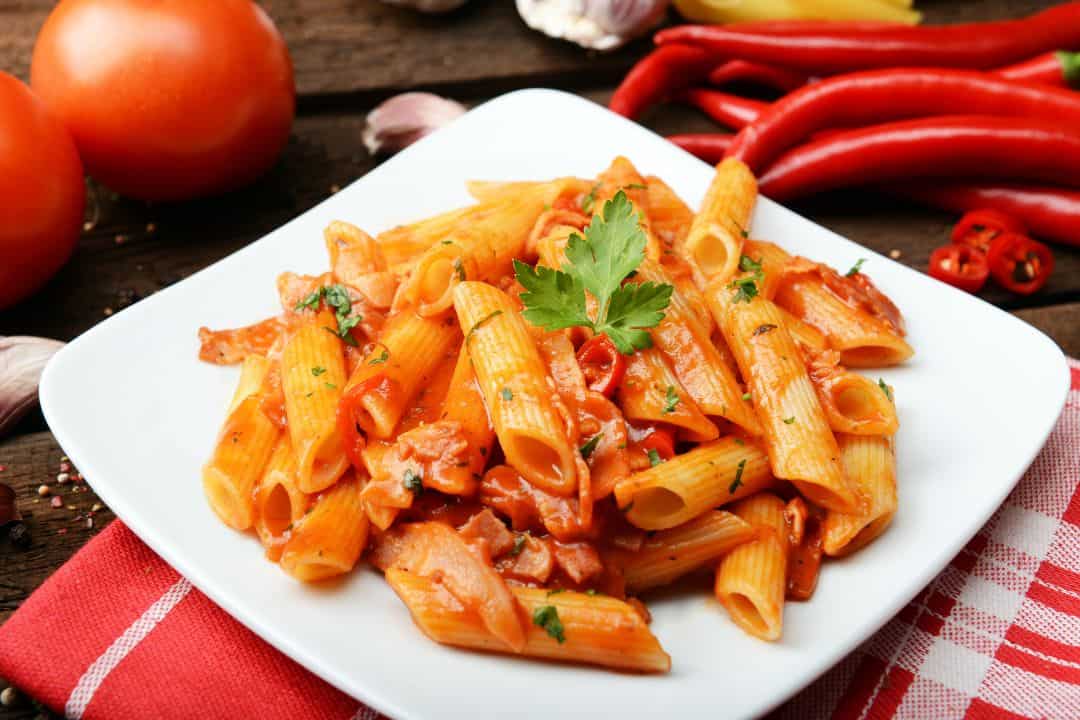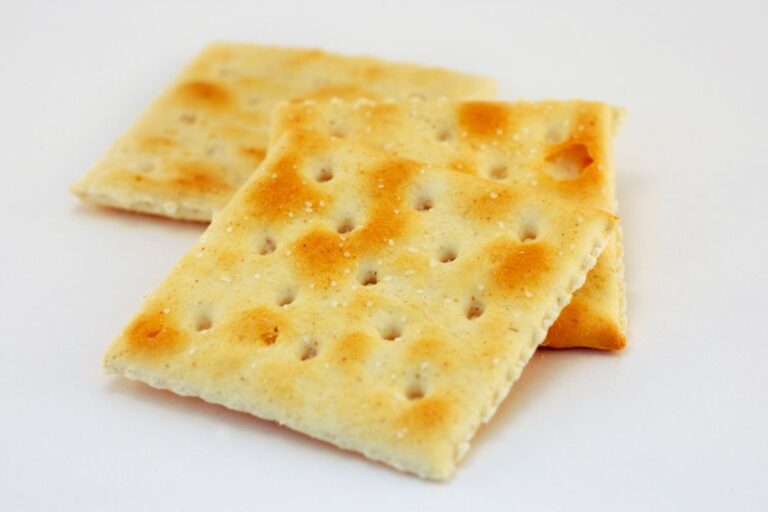Is Gluten Free Pasta Low Fodmap?: Pasta Recipes
Are you wondering, “is gluten free pasta low FODMAP?” as you embark on a gluten-free diet? Good news! Many gluten-free products are available for those with gluten intolerance or coeliac disease.
Among these products, gluten-free pasta has become a welcomed option for many, especially when seeking low-FODMAP meals. However, the question remains: is gluten-free pasta truly low-FODMAP?
Wheat pasta, traditionally made from wheat flour, is a no-go for those with gluten sensitivities. Instead, many turn to alternatives like Barilla gluten-free or brown rice pasta.
These gluten-free alternatives are crafted without the usual gluten-containing grains, providing a safer choice for those with sensitive guts.
While a gluten-free diet caters mainly to those with gluten intolerance, the low-fodmap diet aims to help those who experience adverse reactions to certain fodmap groups.
The Monash FODMAP app, an invaluable tool, offers a comprehensive list of foods and their amount of FODMAPs. With the app’s guidance, one can navigate through high and low food, ensuring the best options for their dietary needs.
Benefits of Low FODMAP Pasta
Living with digestive issues can be challenging, but relief from symptoms like bloating, gas, and abdominal pain is possible with the help of low FODMAP pasta.
This specialized pasta allows individuals following a low FODMAP diet to enjoy a wider variety of foods without triggering discomfort. Reducing their intake of fermentable carbohydrates in regular pasta can improve their gut health and overall well-being.
Find Relief from Symptoms
For those who suffer from irritable bowel syndrome (IBS) or other gastrointestinal disorders, consuming foods high in FODMAPs can lead to uncomfortable symptoms.
However, low FODMAP pasta offers an alternative that can provide much-needed relief. The reduced levels of fermentable carbohydrates in this type of pasta make it easier for the body to digest and absorb nutrients without causing excessive gas production or bloating.
Enjoy a Wider Variety of Foods
One typical challenge individuals face on a low FODMAP diet is the limited food choices available. Many traditional staples, including regular wheat-based pasta, are off-limits due to their high FODMAP content.
However, with low FODMAP pasta options now widely available in stores and online, those following this dietary approach can expand their meal options significantly. They no longer have to feel deprived or restricted.
Low FODMAP pasta comes in various forms, such as rice-based, corn-based, or made from alternative grains like quinoa or buckwheat. These alternatives offer similar textures and flavors to regular wheat-based pasta while being gentle on the digestive system.
With these options, individuals can create mouthwatering recipes that are satisfying and suitable for their dietary needs.
Improve Gut Health
A key benefit of incorporating low FODMAP pasta into one’s diet is its positive impact on gut health. Fermentable carbohydrates found in regular pasta can be difficult for some individuals to digest, leading to an imbalance in the gut microbiota and triggering digestive symptoms.
By opting for low-FODMAP pasta, these fermentable carbohydrates are significantly reduced, allowing the gut to heal and restore its natural balance.
A healthy gut is essential for overall well-being as it is crucial in nutrient absorption, immune function, and mental health. Individuals can support their gut health by choosing low FODMAP pasta while enjoying a comforting pasta bowl.
Tips for Buying Low FODMAP Pasta
Finding a low FODMAP option can be challenging. However, with the proper knowledge and careful label reading, you can enjoy delicious pasta dishes without worrying about triggering digestive symptoms. Here are some tips to help you choose the best low FODMAP pasta:
For a low FODMAP option, look for a gluten-free pasta made from rice, corn, or quinoa.
Gluten-free options are usually safe for those following a low FODMAP diet. Rice, corn, and quinoa-based pasta are excellent alternatives that provide taste and texture similar to traditional wheat-based pasta.
These grains are naturally gluten-free and do not contain high-FODMAP compounds that could irritate your gut.
When browsing through the aisles at your local grocery store or shopping online, keep an eye out for these varieties of gluten-free pasta:
- Rice pasta: Made from ground rice flour, this pasta is widely available and easily digestible.
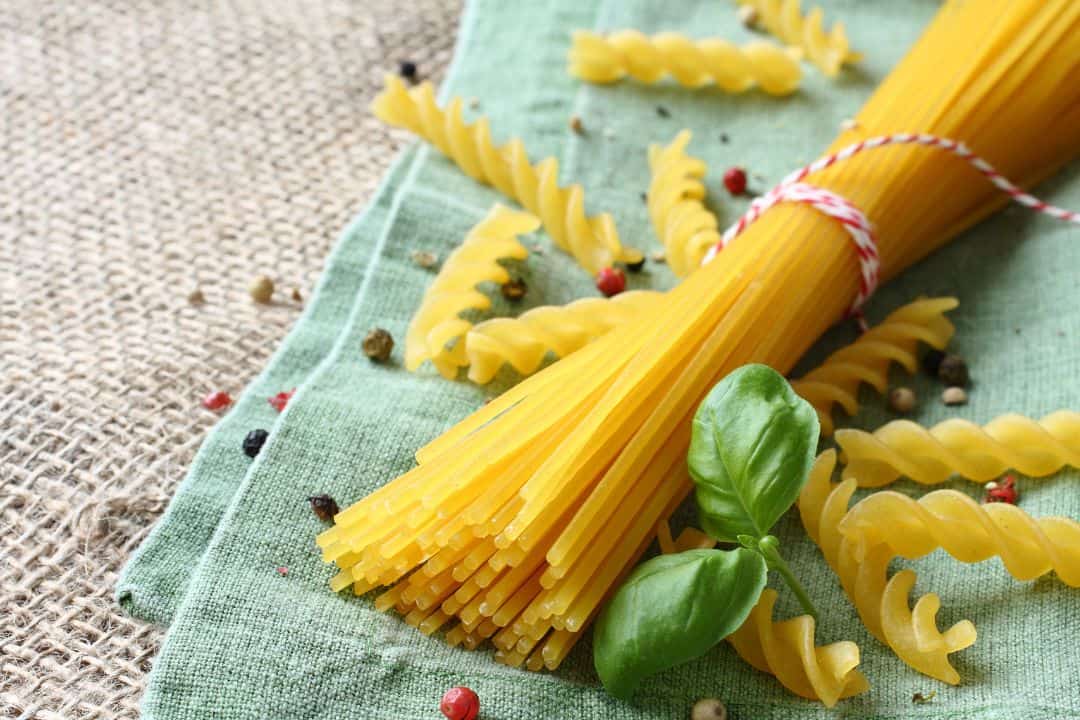
- Corn pasta: Crafted from corn flour or cornmeal, it offers a slightly sweet flavor that pairs well with various sauces.

- Quinoa pasta: Utilizing quinoa flour as its main ingredient, it is packed with protein and nutrients while being gentle on your stomach.
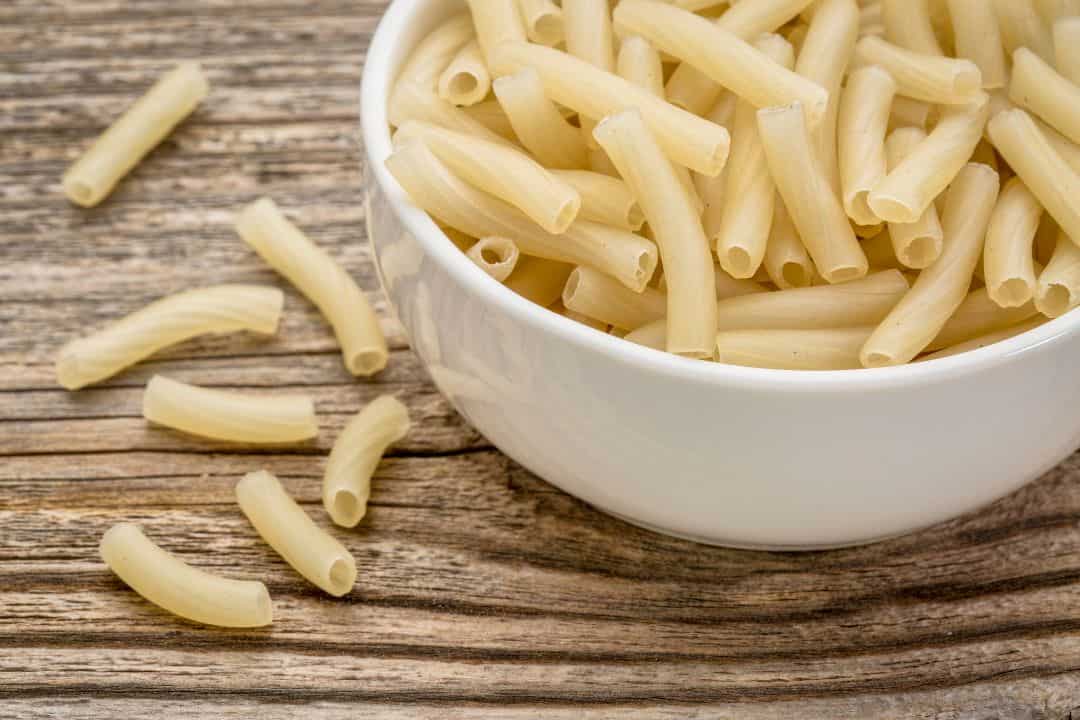
Check labels carefully to ensure no high-FODMAP ingredients are included in the pasta.
Always read the labels attentively to make an informed decision when buying low-FODMAP pasta. While gluten-free options may seem safe initially, some brands may add high-FODMAP ingredients during processing or incorporate different flours into their recipes.
Here’s what you should look for on the label:
- Avoid wheat-based pasta: Wheat contains fructans—a carbohydrate that triggers IBS symptoms in susceptible individuals.
- Watch out for onion and garlic powder: These familiar flavor enhancers often find their way into pasta products, so it’s crucial to avoid them as they are high in FODMAPs.
- Choose plain varieties: Opt for simple pasta without added vegetables or sauces, as they may contain high-FODMAP ingredients.
By carefully examining the label, you can ensure that your chosen pasta is free from any potential triggers and suitable for a low FODMAP diet.
Consider trying alternative grain-free options like chickpea or lentil-based pasta.
Consider grain-free alternatives to add more variety to your low FODMAP pasta repertoire. Chickpeas and lentil-based pasta have gained popularity recently due to their nutritional benefits and unique flavors.
These legume-based pastas offer a good source of protein and fiber while being low in FODMAPs.
Here are some grain-free options worth trying:
- Chickpea pasta: Made from ground chickpeas, this pasta has a slightly nutty taste and pairs well with various sauces.
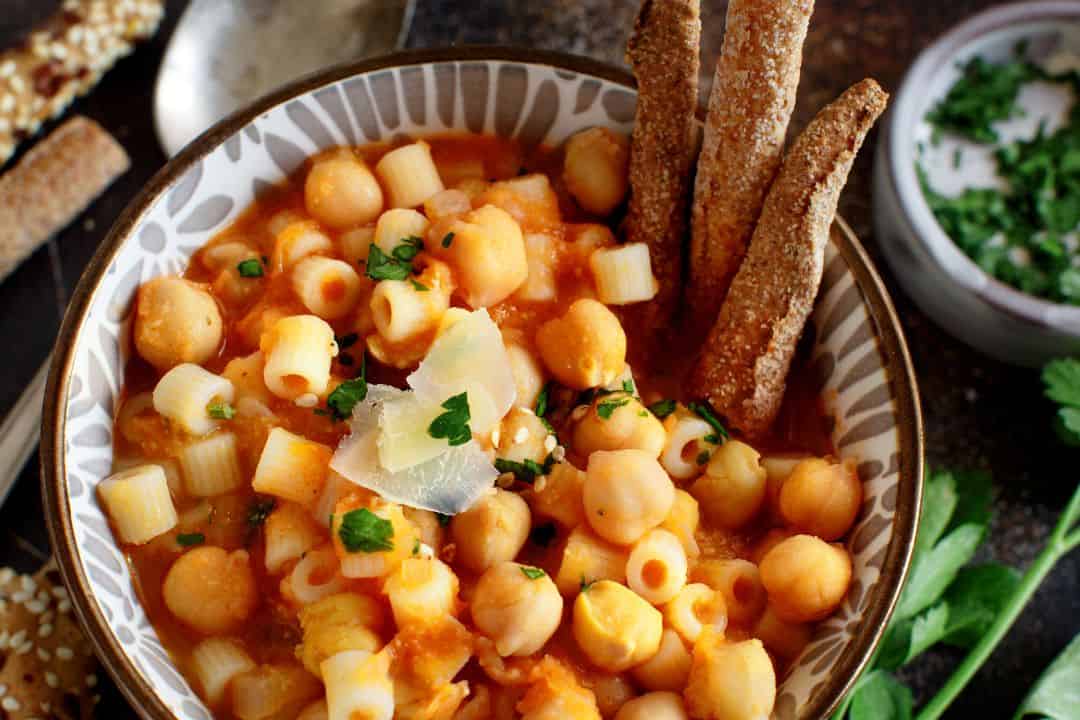
- Lentil pasta: Crafted from red or green lentils, this pasta boasts a rich, earthy flavor and provides an excellent source of plant-based protein.
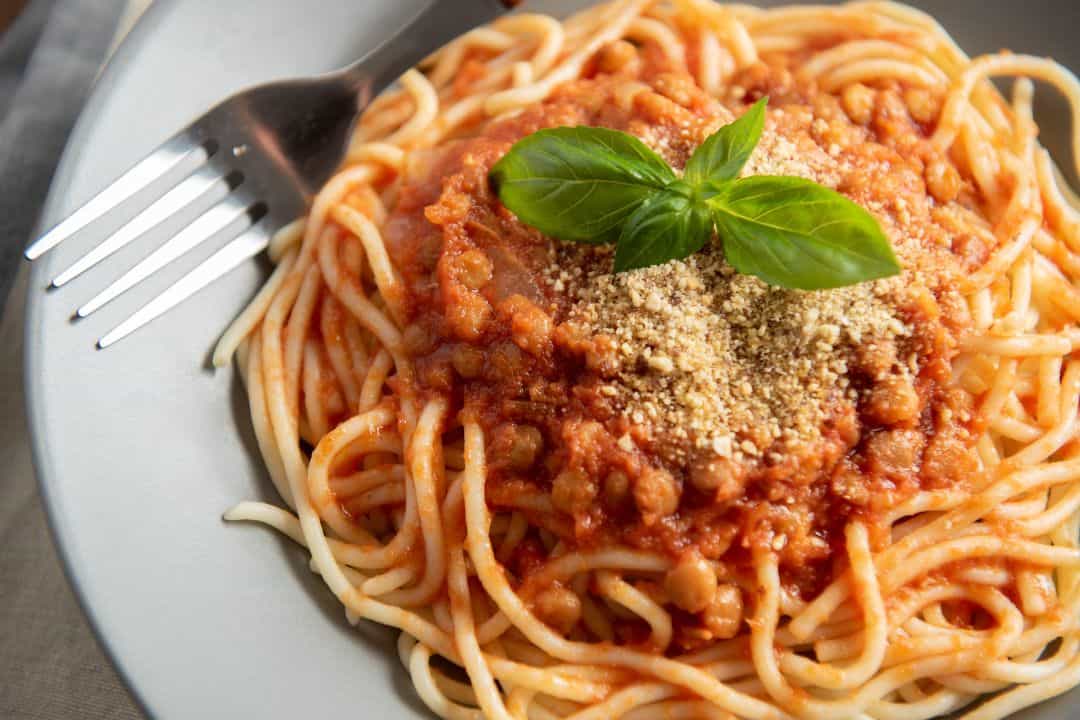
Experimenting with these alternative options can bring new flavors and textures to your dishes while ensuring you stay within the boundaries of a low FODMAP diet.
Delicious Pasta Recipes: Braised Chicken & Mushroom Ragu
Are you a pasta lover who also follows a gluten-free and low FODMAP diet? Don’t worry; you don’t have to abandon your favorite pasta dishes. Indulge in the rich flavors of a braised chicken and mushroom ragu over gluten-free spaghetti.
This recipe allows you to experience the delicious taste of slow-cooked meat sauce without worrying about FODMAPs.
Imagine a hearty and satisfying meal that satisfies your cravings and caters to your dietary needs. This pasta dish combines tender braised chicken with earthy mushrooms, creating a delightful combination of flavors.
The savory sauce coats each strand of gluten-free spaghetti, making every bite an explosion of taste.
To create this mouthwatering dish, cook the chicken until it’s perfectly tender. Then, sauté the mushrooms until they release their natural juices and develop a deep flavor.
Combine these two main ingredients with aromatic herbs and spices to enhance the overall taste profile.
The beauty of this recipe lies in its simplicity. You can enjoy all the pleasures of pasta without worries by using gluten-free spaghetti or other suitable alternatives like rice noodles or gnocchi.
These options ensure that your meal remains gluten-free while providing a satisfying base for the ragu sauce.
If you’re craving variety, numerous other pasta dishes can be made gluten-free and low-FODMAP-friendly:
Pasta salad: Toss together cooked rice noodles or spiralized zucchini with fresh vegetables, herbs, and a tangy vinaigrette for a refreshing summer dish.
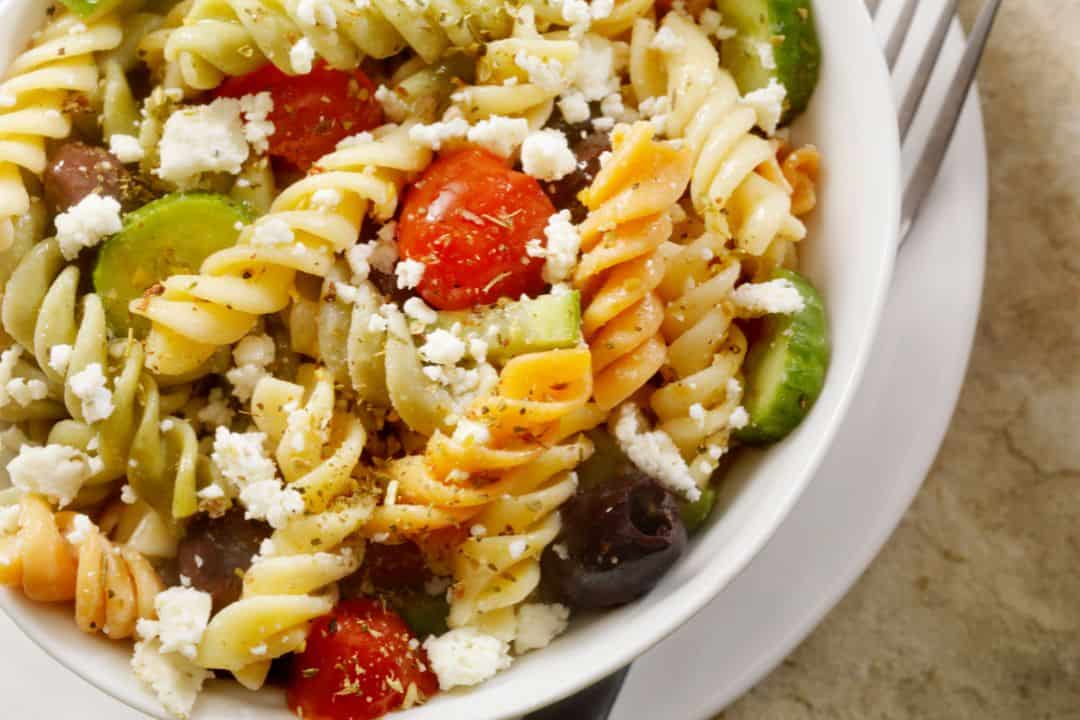
Manicotti: Stuff gluten-free manicotti shells with a flavorful filling made from ricotta cheese, spinach, and herbs. Top it off with tomato sauce for an Italian classic.
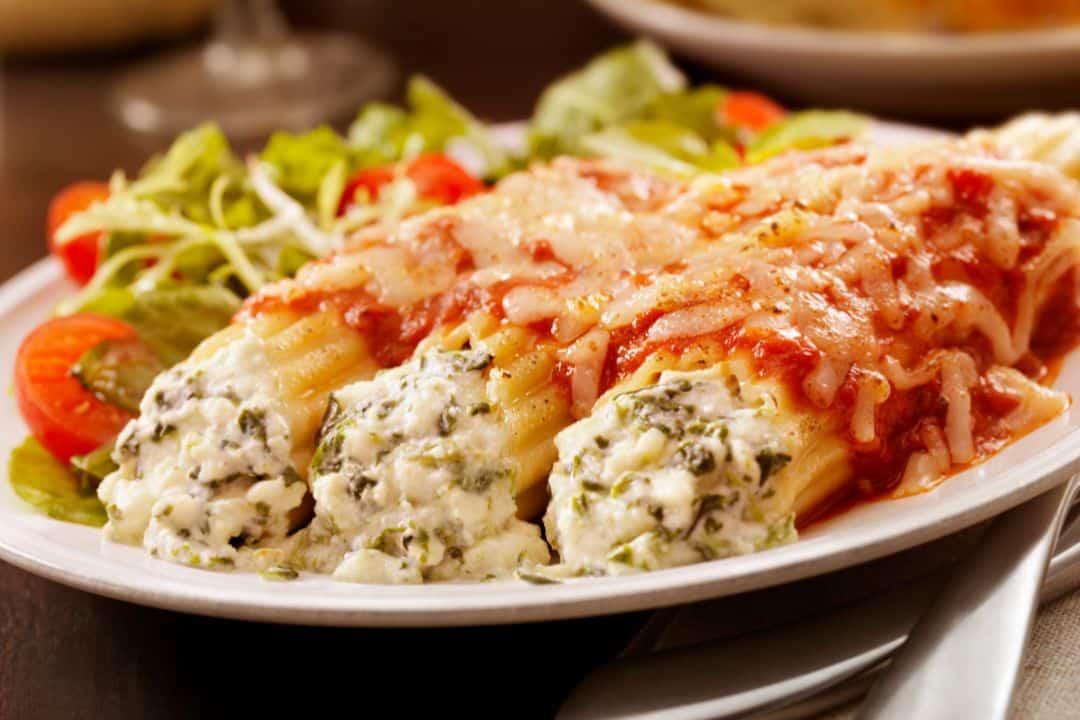
Lasagna: Layer gluten-free lasagna sheets with your choice of protein (such as ground turkey or tofu) and vegetables, alternating with a delicious tomato sauce and cheese.
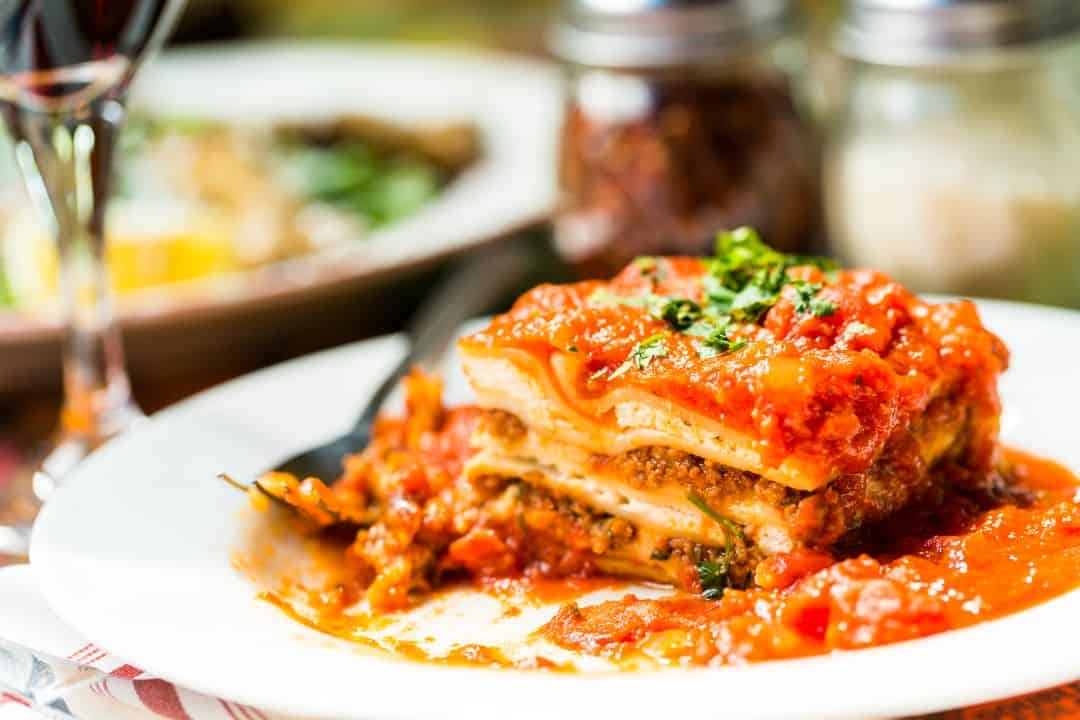
Carbonara: Create a creamy and indulgent carbonara sauce using lactose-free cream, eggs, bacon, and gluten-free spaghetti. The result is a comforting and flavorful pasta dish.

Gnocchi: Make gluten-free gnocchi from scratch using potato or sweet potato. Serve it with your favorite low FODMAP sauce for a truly satisfying meal.

By exploring different recipes and experimenting with alternative ingredients, you can continue enjoying the wonders of pasta while adhering to your dietary restrictions. With these delicious options at your fingertips, you’ll never have to compromise on taste or variety.
So go ahead, cook up a storm in the kitchen! Whip up these delectable pasta dishes that are gluten-free and low in fermentable carbs. From braised chicken and mushroom ragu to carbonara or lasagna, there’s no shortage of flavors to explore.
Embrace the versatility of gluten-free pasta recipes and savor every delightful bite without worrying about FODMAPs.
Thai Basil Steak Salad Recipe

We are looking for a refreshing salad that’s bursting with flavors. Look no further than this Thai Basil Steak Salad recipe. This dish will satisfy your taste buds with tender steak strips and aromatic Thai basil leaves.
Moreover, it’s gluten-free and low in FODMAP ingredients, making it an excellent option for those with dietary restrictions.
Imagine savoring the vibrant flavors of lime, fish sauce, and chili combined with rice noodles. The tanginess of the lime perfectly complements the richness of the steak, while the fish sauce adds a savory umami element.
And let’s not forget about the kick from the chili! It adds just the right amount of heat to elevate this salad to another level. Marinate your steak strips in soy sauce, garlic, and ginger. This step ensures that each bite is infused with delicious Asian-inspired flavors.
While your steak is marinating, cook your rice noodles according to package instructions until they are tender yet firm.
Once your steak is ready, sear it on high heat until it reaches your desired level of doneness. Whether you prefer it medium-rare or well-done, lock in those juicy flavors by giving it a nice sear on both sides.
Next comes the assembly stage, where all these beautiful ingredients harmonize harmoniously. Combine the cooked rice noodles with fresh Thai basil leaves and thinly sliced cucumbers in a large bowl or plate for an extra crunch.
Drizzle some dressing made from lime juice, fish sauce, and a touch of honey over everything for that perfect balance of sweet and tangy.
Now comes the moment you’ve been waiting for – topping off your salad with those succulent steak slices! Arrange them neatly on the noodle bed and garnish with chopped peanuts for added texture and nuttiness.
If you’re feeling adventurous, sprinkle some chopped chili for an extra spicy kick.
With each forkful, you’ll experience flavors that dance on your palate. The tender steak, fragrant Thai basil, and zesty dressing create a symphony of tastes that will leave you craving more. And the best part?
This salad is light yet filling, making it an ideal choice for lunch or dinner.
So why not give this Thai Basil Steak Salad recipe a try? It’s a gluten-free and low-FODMAP option that doesn’t compromise on taste. Indulge in the aromatic Thai basil, tangy lime dressing, and perfectly cooked steak – all in one satisfying dish.
Easy Stovetop Mac and Cheese Recipe
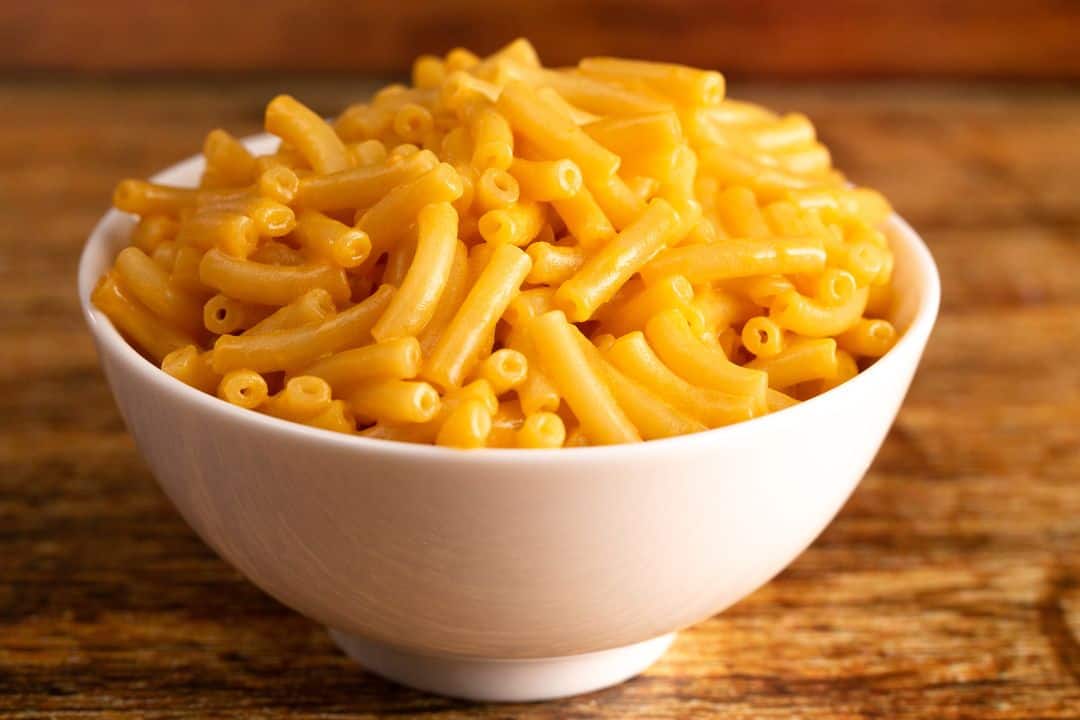
Are you craving a comforting bowl of macaroni and cheese but following a low FODMAP diet? No worries! This easy stovetop mac and cheese recipe allows you to indulge in the creamy goodness without compromising your dietary needs.
This classic favorite uses gluten-free elbow noodles, which are delicious and simple to prepare.

Mac and Cheese Recipe
Equipment
- Large pot For mixing.
- Whisk Essential for stirring and ensuring a smooth sauce, especially when creating the roux and incorporating the milk.
- Medium-sized saucepan For making the cheese sauce.
- Oven-proof casserole dish To bake the Mac and Cheese in the oven
- Measuring cups and spoons To accurately measure out ingredients.
- Wooden spoon Useful for stirring the pasta into the cheese sauce.
Ingredients
For the Filling
- 8 oz elbow macaroni (or any pasta shape of your choice)
- 1 cup shredded sharp cheddar cheese
- ½ cup grated Parmesan cheese
- 3 cups milk preferably whole milk
- ¼ Zest of Lemon
- ¼ cup unsalted butter
- 2.5 cups all-purpose flour
- ½ tbsp salt
- ½ tbsp black pepper
- ½ tbsp paprika
- ½ cup bread crumbs for topping Optional
Instructions
Cooking Method
Prep
- Preheat your oven to 350°F (175°C).
Pasta
- In a large pot, bring water to a boil. Add a pinch of salt, and then add the elbow macaroni. Cook until not fully done, about 6 minutes. You want them a little firmer. Drain the pasta using a colander or strainer.
Roux
- In a medium-sized saucepan, melt the butter over medium heat. Once melted, sprinkle in the flour while whisking continuously to prevent lumps. This mixture is called a roux. Cook it for about 1 minute, keeping the whisking constant.
Mik
- Gradually add the milk to the roux while continuously whisking to keep the mixture smooth. Keep cooking and whisking until the mixture thickens, which might take around 5-7 minutes.
Cheese
- Once your milk mixture has thickened, reduce the heat to low, and start adding the cheddar cheese and Parmesan cheese a handful at a time. Keep stirring until all the cheese has melted into a creamy sauce. Season with salt, pepper, and paprika.
Combine
- Pour the drained pasta into the cheese sauce and stir to combine.
Bake
- Transfer the mac and cheese to your oven-proof casserole dish. If you’re using bread crumbs, sprinkle them evenly over the top. Place in the preheated oven and bake for about 20 minutes or until the top is golden brown and the sides are bubbling.
Serving
- Remove from oven and let cool slightly before slicing. Serve warm, optionally, with a dusting of powdered sugar or a small scoop of vanilla ice cream.
Notes
Bread crumbs: If you like a crunchy topping, bread crumbs are a great addition. Mixing some melted butter with the bread crumbs before sprinkling can give a richer flavor and crispier crust. Storage: Leftovers can be stored in an airtight container in the refrigerator for up to 3 days. Could you reheat in the oven or microwave before serving?
Nutrition
By using gluten-free pasta, you can savor every bite of this delectable macaroni and cheese recipe without worrying about any potential FODMAP triggers that may disrupt your digestion.
This easy stovetop mac and cheese recipe is perfect when you crave comfort food but want to stay within the limits of your low FODMAP diet. Whether lactose intolerant or following a specific dietary plan, this dish allows you to indulge without sacrificing taste or texture.
Combining gluten-free elbow noodles and your preferred lactose-free cheese creates a creamy and satisfying mac and cheese experience. Feel free to experiment with different types of cheese to find your favorite flavor profile.
From sharp cheddar to creamy Gouda, the choice is yours!
Don’t forget to adjust the seasoning according to your taste preferences. Salt and pepper can enhance the flavors and bring out the richness of the cheese sauce.
With its simplicity and deliciousness, this easy stovetop mac and cheese recipe will quickly become a go-to option for those seeking comfort food while adhering to a low FODMAP diet. Enjoy every cheesy bite guilt-free!
So why wait? Grab some gluten-free elbow noodles, gather your ingredients, and get ready to whip up a batch of this delicious macaroni and cheese recipe that’s FODMAP-friendly and incredibly satisfying!
Gluten-Free vs Low FODMAP Pasta: Understanding the Difference
Gluten-free pasta has gained popularity in recent years, with more people embracing a gluten-free lifestyle for various reasons. However, it is essential to understand that gluten-free does not necessarily mean low FODMAP.
Not all gluten-free pasta is suitable for a low FODMAP diet. Let’s explore the distinction between these two types of pasta and why soft FODMAP pasta is specifically designed to be gentle on the digestive system.
The Distinction Between Gluten-Free and Low FODMAP Pasta
Gluten is a protein found in wheat, barley, and rye. People with celiac disease or non-celiac gluten sensitivity must avoid gluten-containing foods to prevent adverse health effects. Hence, they turn to gluten-free alternatives like rice or corn-based pastas.
On the other hand, a low FODMAP diet focuses on reducing fermentable carbohydrates that can trigger symptoms in individuals with irritable bowel syndrome (IBS).
FODMAPs are short-chain carbohydrates that can be poorly absorbed by some people’s intestines, leading to bloating, gas, and other gastrointestinal discomforts.
Not All Gluten-Free Pasta Are Suitable for a Low FODMAP Diet
While gluten-free pasta lacks gluten-containing grains like wheat, it may still contain high-FODMAP ingredients such as onion powder or garlic powder. These ingredients can cause digestive issues for those following a low FODMAP diet.
To ensure suitability for a low FODMAP diet, it is essential to look for specific certifications or labels indicating that the pasta is certified as low FODMAP.
This ensures that the product has been tested and meets the necessary criteria established by Monash University – one of the leading authorities on the low FODMAP diet.
Why Low FODMAP Pasta Is Gentle on the Digestive System
Low-FODMAP pasta is specially formulated to minimize the intake of high-FODMAP ingredients while providing a delicious and satisfying meal.
These pasta are often made from alternative grains like rice, corn, quinoa, or legumes such as lentils. Manufacturers can create pasta that is easier on the digestive system.
Low FODMAP pasta may contain natural flavorings and seasonings that do not trigger symptoms in individuals with IBS. This allows people following a low FODMAP diet to enjoy various flavors without compromising their digestive health.
Explore Delicious Low-FODMAP Pasta Options
Now that you’ve learned about the benefits of low-FODMAP pasta and some helpful tips for buying it, it’s time to dive into the delicious world of low-FODMAP pasta recipes.
Whether you’re a fan of hearty ragu, refreshing salads, or classic comfort food like mac and cheese, there’s a low FODMAP pasta recipe for everyone.
Try our Braised Chicken and mushroom Ragu recipe for a comforting and flavorful meal that will satisfy your cravings. If you want something lighter, our Thai Basil Steak Salad recipe combines tender steak with fresh herbs and zesty dressing.
And if you’re looking for a quick and easy option, our Stovetop Mac and Cheese recipe will surely please kids and adults alike.
So why wait? Grab your apron and start exploring these mouthwatering low-FODMAP pasta recipes today! Your taste buds will thank you.
FAQs – Is Gluten Free Pasta Low Fodmap?
Can I use regular pasta instead of low FODMAP pasta?
👉 Yes, regular pasta contains high amounts of fermentable carbohydrates (FODMAPs) that can trigger digestive symptoms in individuals with sensitivities. Sticking to specifically labeled low FODMAP pasta options is best to ensure they suit your dietary needs.
Where can I find low FODMAP pasta?
👉 Low FODMAP pasta can be found at specialty health food stores or online retailers. Look for brands that label their products as “low FODMAP” to ensure they meet your dietary requirements.
Are all gluten-free pastas low in FODMAP?
👉 Not necessarily. While gluten-free pastas are free from wheat proteins, they may still contain other high-FODMAP ingredients, such as onion or garlic powder. Always check the ingredient list or look for specific “low FODMAP” labeling on gluten-free pasta.
Can I freeze leftover cooked low FODMAP pasta?
👉 Yes, you can freeze cooked low FODMAP pasta for future use. Just store it in an airtight container or freezer bag to prevent freezer burn.
Are there any other low FODMAP alternatives to traditional pasta?
👉 Yes, there are several low FODMAP alternatives to traditional wheat-based pasta. Some options include rice noodles, quinoa pasta, corn-based pasta, and even vegetable noodles made from zucchini or butternut squash.
These alternatives can add variety to your meals while maintaining a low FODMAP diet.

Born and raised in a family of foodies, Georgia’s passion for cuisine was nurtured from a young age as she learned the intricacies of flavor and texture from her grandmother’s kitchen. As an adult, this early fascination blossomed into a full-fledged love affair with the culinary world.

